Last updated on 2025-04-30
A review and photo examples of the SUMMARON M 35mm F2.8 with LIECA M8 digital rangefinder camera.
Table of contents
Gallery
- LEICA SUMMARON-M 35mm F2.8 Photo example (using Leica M8)
Review
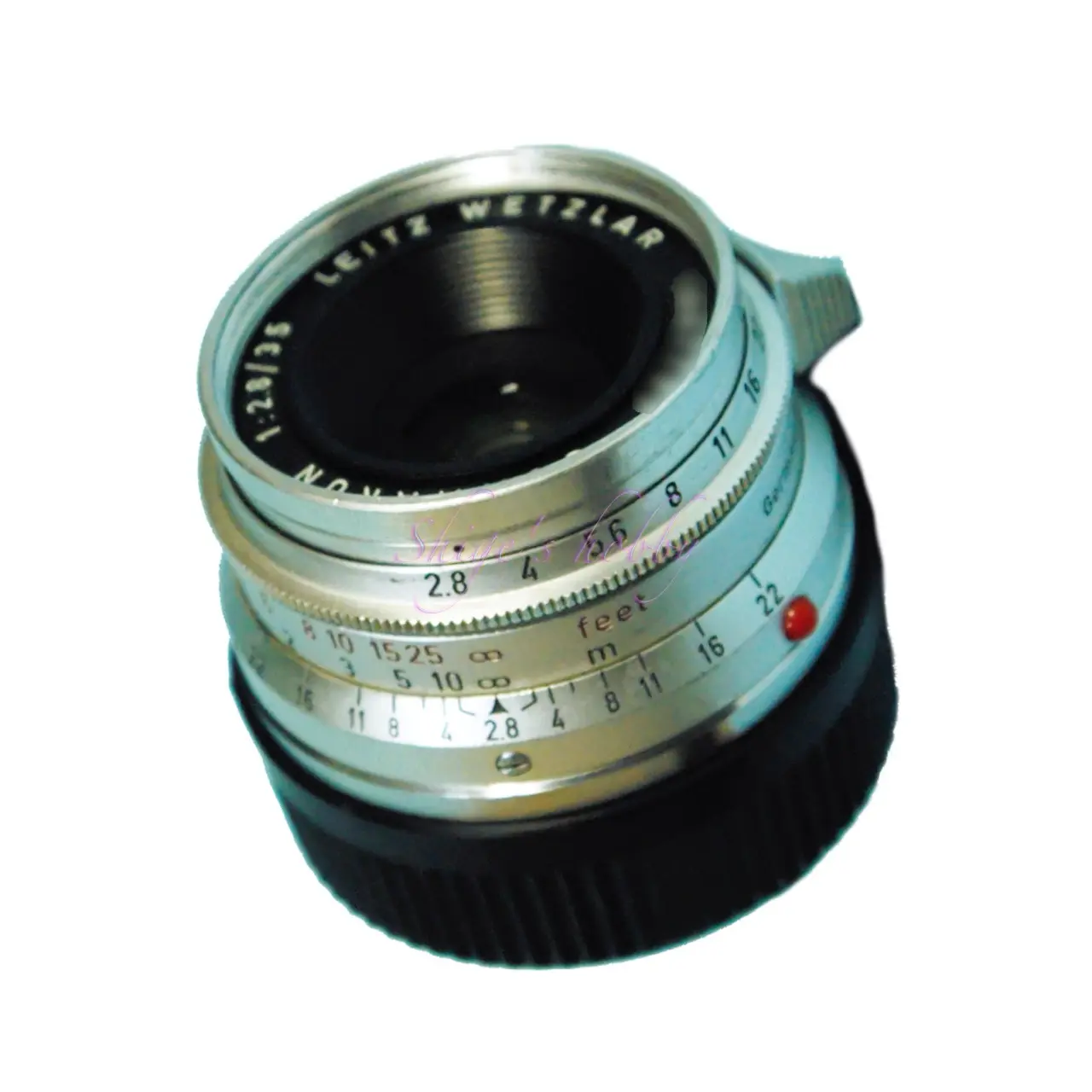
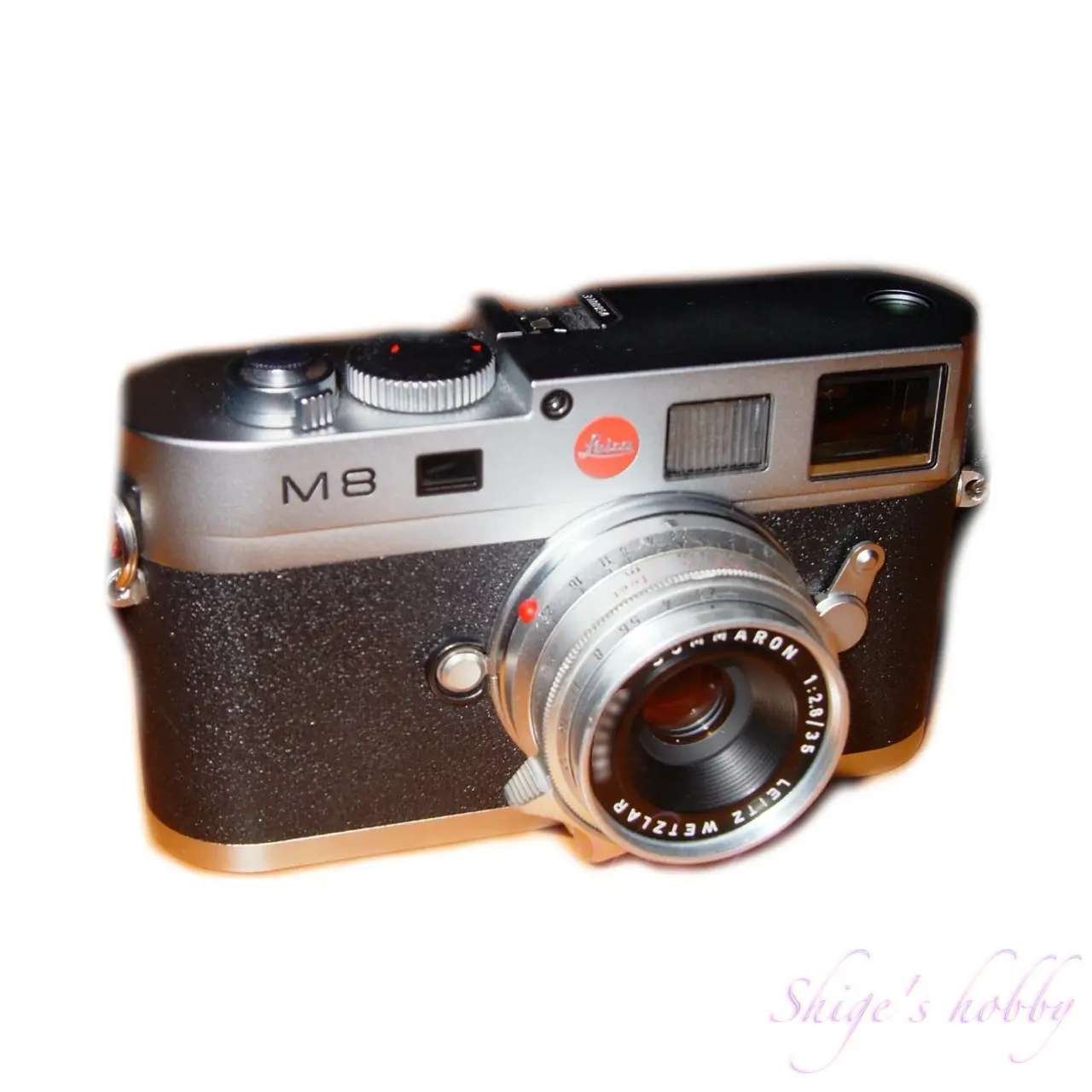
1.Overview
The Summaron 35mm F2.8 has the same lens barrel as the first Summicron, an 8-element lens released in 1958, but has a different lens configuration.
The main specifications are as follows, and the details are listed in the table.
- Aperture value: 2.8
- Lens configuration: 6 elements in 4 groups
- Aperture blades: 10
- Minimum focusing distance: 0.7m, 0.65m with glasses
- Leica M rangefinder camera rangefinder coupling: 0.7m
- IROOA hood
According to the LEICA Wiki page in the reference link, 52,400 units were produced in the 10 years from 1958 to 1968.
The name Summaron is a lens name that is not often used, and is only seen on 28mm and 35mm lenses.
The lens mounts are M-mount and L-mount versions, and the glasses-equipped version is only the M-mount version for the M3. All lenses are equipped with a stopper at infinity.
The lens hood, IROOA, can be used because the lens barrel is the same as the first Summicron. The hood cannot be attached backwards because there is an infinity stopper, just like the first Summicron.
2.Usage
When I owned a Summicron with glasses, I found a Summicron-like Summicron without glasses for a much cheaper price than in the 2020s, so I tried it out of curiosity.
I don’t know if it was because it was an old lens or because it was cloudy, but there were flashy ghosts in backlight and a decrease in contrast due to flare. In frontlight, the image was neither good nor bad for a 35mm lens, but it wasn’t very impressive.
The infinity stopper is a matter of preference for users, but if you have a manual focus lens with a moderate helicoid weight, you won’t have any trouble with the focal length shifting even without such a stopper.
However, the gimmick is attractive, and when you return the lens to infinity, it naturally locks with a click sound. The fact that it is equipped with this costly and seemingly wasteful mechanism stimulates your desire for material things and increases the satisfaction of owning it.
In practical terms, it’s good that you don’t have to slide a slide switch to stop the lens like with modern AF lenses. When you want to move the helicoid again, you have to release the lock, but once you get used to it, it’s not that much of a hassle.
3.Summary
To sum up the Summaron 35mm F2.8, it is an inconspicuous presence sandwiched between the legendary 8-element Summicron and the inexpensive F3.5 Summaron.
If you look for its advantages, it has the same appearance as the 8-element Summicron but is cheaper. If properly maintained, the feel of the helicoid and the sound of the lens stopper when stopping are the same as when using a Summicron.
Because it is an old lens, there are fewer in good condition, so it is difficult to determine the balance between purchase price and product condition.
・Digression
In the 2000s, when the Leica M8 was on sale, this lens could be found for under 100,000 yen, and it was a wallet-friendly lens that allowed you to experience the feeling of an 8-element Summicron, including the stopper mechanism. However, like other M-mount lenses, in the 2020s it has become very expensive, sometimes costing over 200,000 yen without glasses. Looking at the number of lenses produced, it is much more numerous than Leica R lenses, but the fact that it has maintained its current price is partly due to the popularity of the M-type Leica.
Even if you buy it on a whim, there will be little damage as long as you don’t sell it to the wrong person, as Leica itself has collectors all over the world. However, if you go through a domestic dealer, the selling price will be high, but the trade-in price will often be half to one-third of that.
In particular, if there is even the slightest deterioration of the coating or balsam peeling, the store will look at the purchase price.
Depending on the era of this lens, some shops sell it with the different lens coatings, such as blue coating, indicating these differences, but if you’re shooting with a digital camera, the condition of the lens has a greater effect on the image, so it’s best to think of the coating as just an added bonus.
If you look on sites like Flicker, you can find examples of overseas enthusiasts comparing the different coatings, so you can refer to them if you’re interested.
Specification and Competitor
The lens configuration of the Summaron 35mm F2.8 is the same as that of the Summaron 35mm F3.5 (Sunhands Summaron), but because the maximum aperture is different, the lens spacing and front lens diameter are different.
- The diagrams are quoted from materials distributed by each company, and the sizes were adjusted by us when tracing, so they are not exact.
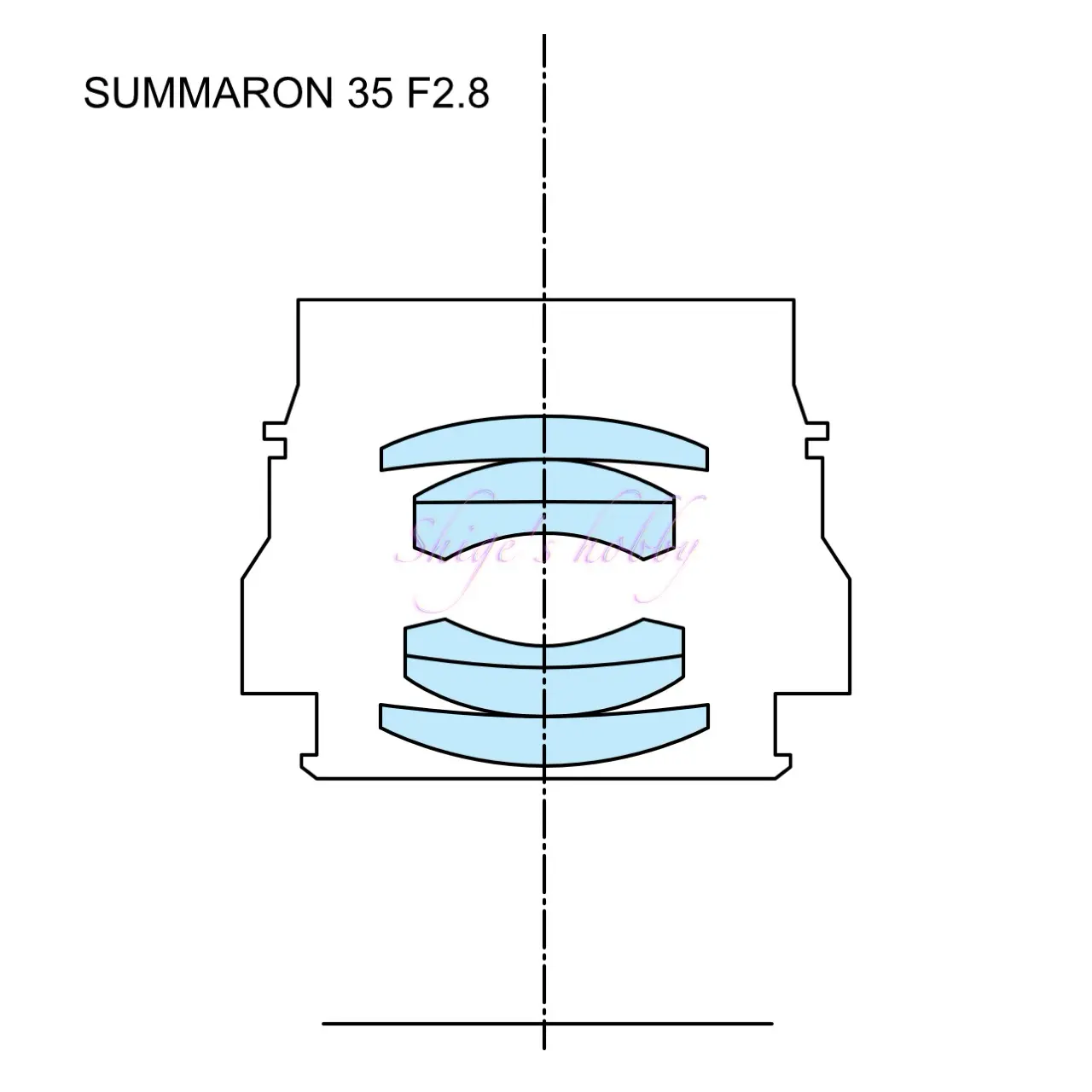
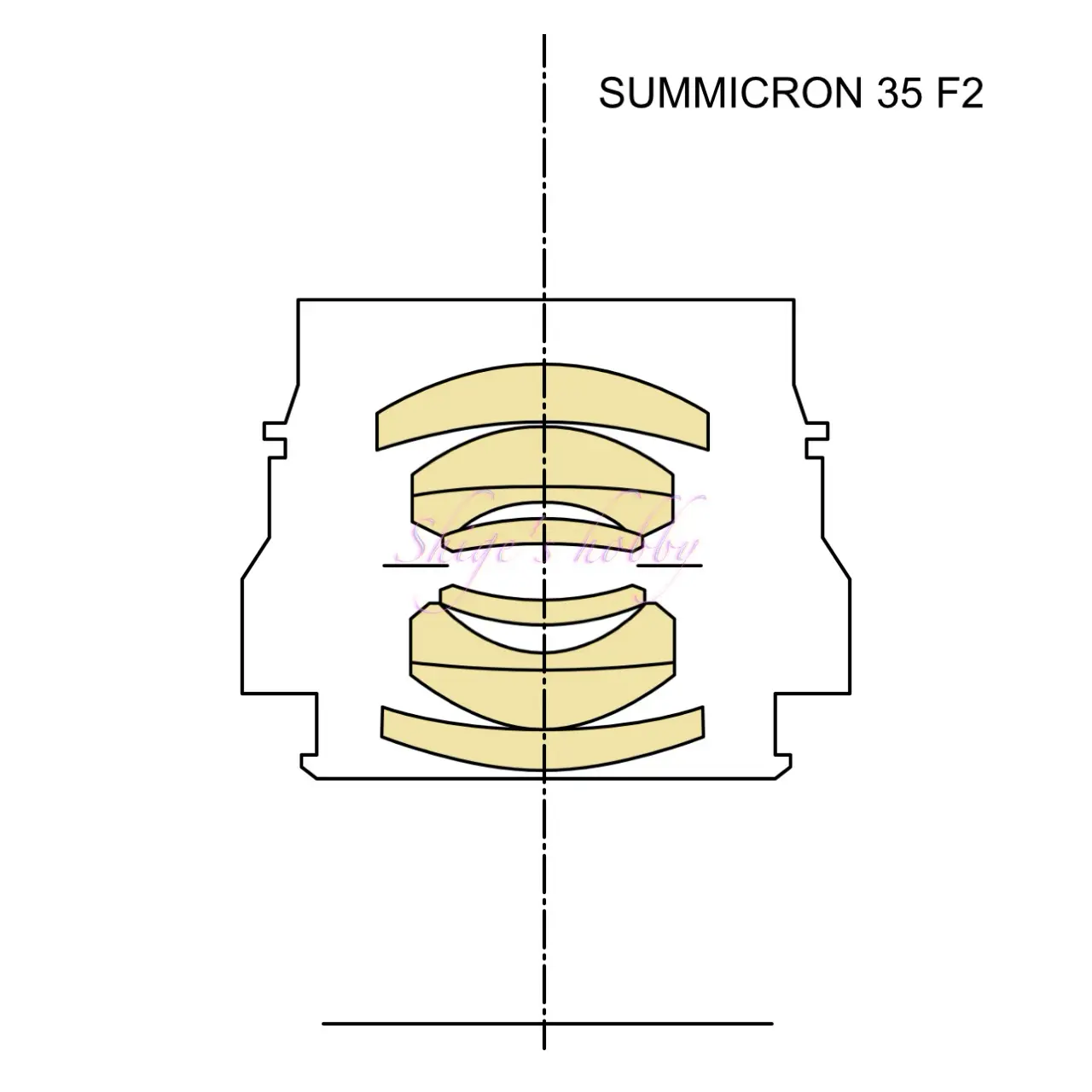
| Items | SUMMARON | SUMMICRON |
| focal length(mm) | 35 | 35 |
| Maximum aperture | 2.8 | 2 |
| Minimum aperture | 22 | 16 |
| Leaf blade | 10 | 10 |
| Lens configuration | 6 elements in 4 groups | 8 elements in 6 groups |
| Minimum distance(m) | 0.7 google=0.65 | 0.7 google=0.65 |
| Lens length(mm) | 29 | 29 |
| Lens max diameter(mm) | 51 | 51 |
| Filter type | E39 | E39 |
| Weight(g) | 135 | 150 |
| Hood | IROOA | IROOA |
| Lens mount | LEICA M | LEICA M |
| Release date | 1958~1968 | 1958~1969 |
| Production numbers | 52,400 | 38,450 |
Reference links
Update history
- 2025.4.16
- 2024.8.23
- 2024.02.19
Affiliate links
- Please see the disclaimer regarding advertising here.
- Italicized links in the text are advertisement links that take you to other sites.


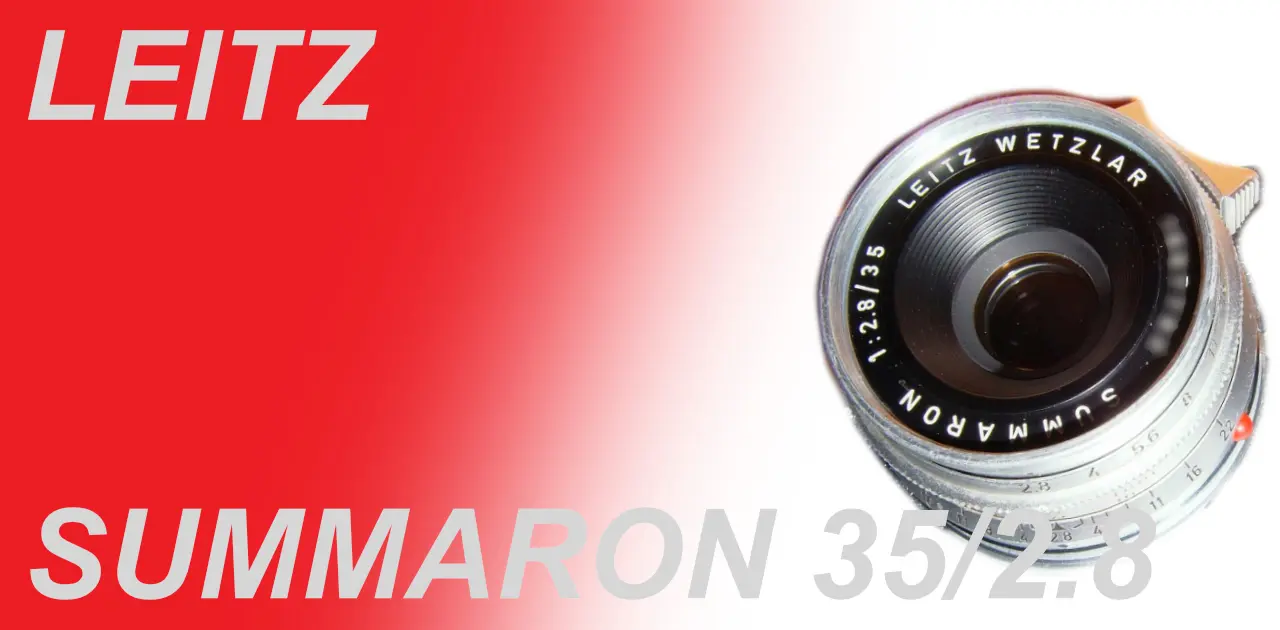

Be First to Comment